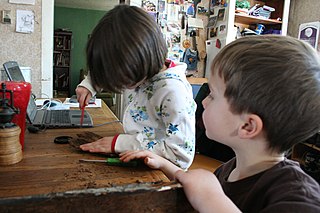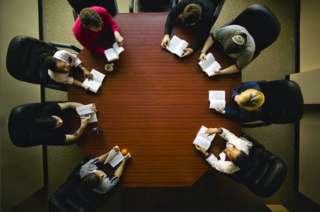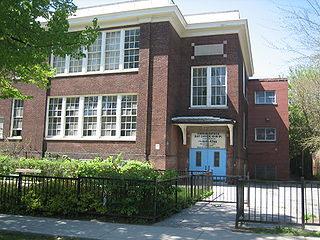
Unschooling is an informal learning method that prioritizes learner-chosen activities as a primary means for learning. Unschoolers learn through their natural life experiences including play, household responsibilities, personal interests and curiosity, internships and work experience, travel, books, elective classes, family, mentors, and social interaction. Often considered a lesson- and curriculum-free implementation of homeschooling, unschooling encourages exploration of activities initiated by the children themselves, under the belief that the more personal learning is, the more meaningful, well-understood, and therefore useful it is to the child. While unschooled students may occasionally take courses, unschooling questions the usefulness of standard curricula, fixed times at which learning should take place, conventional grading methods and standardized tests, forced contact with children in their own age group, the compulsion to do homework regardless of whether it helps the learner in their individual situation, the effectiveness of listening to and obeying the orders of one authority figure for several hours each day, and other features of traditional schooling.

The Sudbury Valley School was founded in 1968 by a community of people in Framingham, Massachusetts, United States. In 2019, several schools stated that they were based on the Sudbury Model in the United States, Australia, Belgium, Canada, France, Germany, Israel, Japan and Switzerland.
Minimally invasive education (MIE) is a form of learning in which children operate in unsupervised environments. The methodology arose from an experiment done by Sugata Mitra while at NIIT in 1999, often called The Hole in the Wall, which has since gone on to become a significant project with the formation of Hole in the Wall Education Limited (HiWEL), a cooperative effort between NIIT and the International Finance Corporation, employed in some 300 'learning stations', covering some 300,000 children in India and several African countries.

Democratic education is a type of formal education that is organized democratically, so that students can manage their own learning and participate in the governance of their school. Democratic education is often specifically emancipatory, with the students' voices being equal to the teacher's.

Student voice is the individual and collective perspective and actions of students within the context of learning and education. It is identified in schools as both a metaphorical practice and as a pragmatic concern. Tech educator Dennis Harper noted that student voice gives students "the ability to influence learning to include policies, programs, contexts and principles."

The Circle School is a self-directed democratic school located in Harrisburg, Pennsylvania, and founded in 1984, and is operated similarly to the Sudbury Valley School and Hudson Valley Sudbury School. It enrolls pre-kindergarten through high school aged children. The Circle School currently has approximately 80 students enrolled and 6 full-time staff members. It is one of three Sudbury-like schools in Pennsylvania and one of the oldest in the world.
Critical consciousness, conscientization, or conscientização in Portuguese, is a popular education and social concept developed by Brazilian pedagogue and educational theorist Paulo Freire, grounded in neo-Marxist critical theory. Critical consciousness focuses on achieving an in-depth understanding of the world, allowing for the perception and exposure of social and political contradictions. Critical consciousness also includes taking action against the oppressive elements in one's life that are illuminated by that understanding.
Freedom to Learn (FTL) is a statewide education program in Michigan helping schools create high performing, student-centered learning environments by providing each student and teacher with direct, consistent access to 21st century learning tools.

The Beach School was a democratic free school in Toronto based on the Sudbury principles of education. The model has two basic tenets: educational freedom and democratic governance. Small and independent, The Beach School was a community of self-motivated learners, aged 4–19, who determined their own curriculum, and each had an equal voice in school governance. Located at 42 Edgewood Ave near Kingston Road and Dundas Street East, the school opened in the fall of 2003 and closed in June 2008 owing to a shortage of students. The Beach School was incorporated as a co-operative and, at the time of closing, was one of two Sudbury schools in Canada; the only one in Ontario.
Multicultural education is a set of educational strategies developed to provide students with knowledge about the histories, cultures, and contributions of diverse groups. It draws on insights from multiple fields, including ethnic studies and women studies, and reinterprets content from related academic disciplines. It is a way of teaching that promotes the principles of inclusion, diversity, democracy, skill acquisition, inquiry, critical thought, multiple perspectives, and self-reflection. One study found these strategies to be effective in promoting educational achievements among immigrant students.
Student-directed teaching is a teaching technology that aims to give the student greater control, ownership, and accountability over his or her own education. Developed to counter institutionalized, mass, schooling, student-directed teaching allows students to make their own choices while they learn in order to make education much more meaningful, relevant, and effective.

Fairhaven School was founded in 1998 in Upper Marlboro, Maryland. It is one of over 30 schools based on the Sudbury Model. The model has two basic tenets: educational freedom and democratic governance. It is a private school, attended by children from the ages of 5 to 19. The school was founded by Mark and Kim McCaig after learning about Sudbury Valley School in Framingham, Massachusetts.

Yaacov Hecht , is an Israeli educator and worldwide pioneer of democratic education.
Daniel A. Greenberg, was one of the founders of the Sudbury Valley School, has published several books on the Sudbury model of school organization, and was described by Sudbury Valley School trustee Peter Gray as the "principal philosopher" among its founders. He was a physics professor at Columbia University, and was described by Lois Holzman as the school's "chief 'philosophical writer'".
An ungraded school is a school that does not formally organize students according to age-based grade levels. Students' achievements are assessed by teachers, and each student is individually assigned to one of several fluid groups, according to what the student needs to learn next.
The Philadelphia Free School also known as Philly Free School or PFS, is a Democratic Free School in Philadelphia, Pennsylvania. Philly Free School operates on the democratic education or Sudbury school model. The school opened in the fall of 2011 and offers a sliding scale tuition to students ages 4 to 19.
The Free School is the oldest independent, inner-city alternative school in the United States. Founded by Mary Leue in 1969 based on the English Summerhill School philosophy, the free school lets students learn at their own pace. It has no grades, tests, or firm schedule: students design their own daily plans for learning. The school is self-governed through a weekly, democratic all-school meeting run by students in Robert's Rules. Students and staff alike receive one equal vote apiece. Unlike Summerhill-style schools, the Free School is a day school that serves predominantly working-class children. Nearly 80 percent of the school is eligible for reduced-price meals in the public schools. About 60 students between the ages of three and fourteen attend, and are staffed by six full-time teachers and a number of volunteers.

The term learning environment can refer to an educational approach, cultural context, or physical setting in which teaching and learning occur. The term is commonly used as a more definitive alternative to "classroom", but it typically refers to the context of educational philosophy or knowledge experienced by the student and may also encompass a variety of learning cultures—its presiding ethos and characteristics, how individuals interact, governing structures, and philosophy. In a societal sense, learning environment may refer to the culture of the population it serves and of their location. Learning environments are highly diverse in use, learning styles, organization, and educational institution. The culture and context of a place or organization includes such factors as a way of thinking, behaving, or working, also known as organizational culture. For a learning environment such as an educational institution, it also includes such factors as operational characteristics of the instructors, instructional group, or institution; the philosophy or knowledge experienced by the student and may also encompass a variety of learning cultures—its presiding ethos and characteristics, how individuals interact, governing structures, and philosophy in learning styles and pedagogies used; and the societal culture of where the learning is occurring. Although physical environments do not determine educational activities, there is evidence of a relationship between school settings and the activities that take place there.
The Clearwater School is an independent school in Bothell, Washington, a northern suburb of Seattle, Washington, United States. Clearwater is a Sudbury school that serves students from ages 4 to 19.








